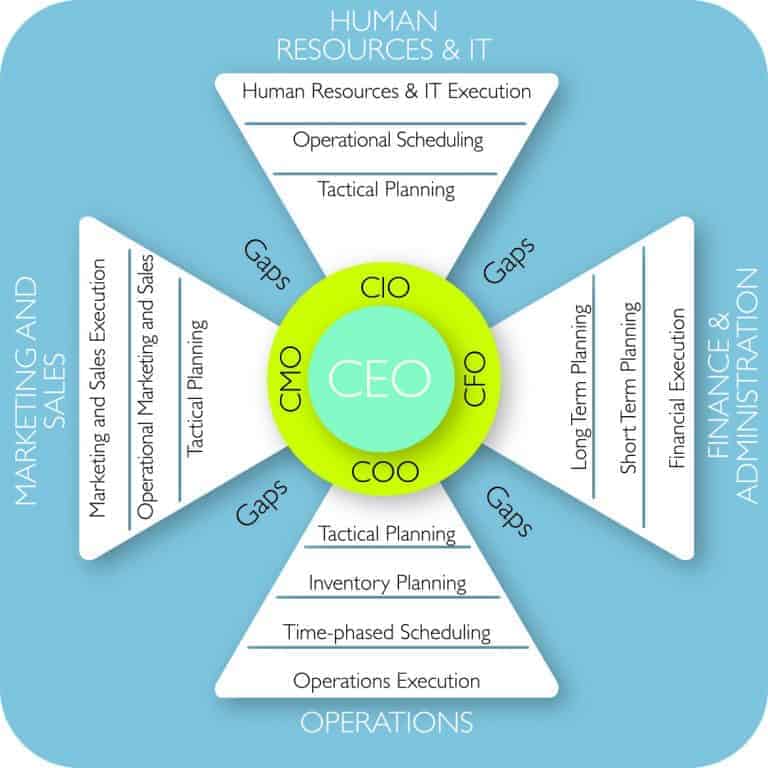Five Confusions in Your Company Could Wipe Out the Entire Profit for the Year
There is no doubt that confusion results in loss of action. Because clarity is the basis of all actions. Clarity gives you confidence and confidence results in action.
Imagine a scenario where you need to make a decision and, in order to make a decision you need information, some of which is missing.
Generally speaking, you will wait till you have enough information to have clarity and make a decision.
I was recently talking to a CEO whose business suffered from plummeting profits in the last few years. To some extent, the general economic climate had a lot to contribute to this fall of profit.
However, as I began analysing the business by interviewing people and then looking at the data that they had produced,
I reckoned that there was something much more serious than the business climate which had resulted in shrinking profits.
I saw confusions everywhere in their operations. In my mind, there were at least 5, maybe more, points of confusion which impacted directly on their profit.
In other words if these 5 confusions were removed, the company could restore a significant part of its profitability loss, despite the economic downturn.
Without revealing the type of the business or even any the specific details of industry it is operating in, here are the 5 things that really mattered. You may be able to use similar thinking in your business.
1. Confusions in Your Company: Product Proliferation

One of the first things I noticed was that the business had too many products. Product proliferation had festered to an extent where the customer was confused when at the point of consideration. Which one to purchase among the sea of products which looked and worked in a very similar manner?
A typical customer did not have time to discern the subtle differences between product A and product B.
In my view, if product portfolio was simplified, back to perhaps 3 ranges of premier, mid-level and budget level,
the company would be in much better position to actually educate the customers of the differences between these products and then help them pick whichever product suited their needs best.
No doubt that every niche wants a totally customised product and no doubt that market segmentation dictates more and more customised products to every customer need.
However, this can go too far, and lead to too much complexity not only in the customer decision making process, but also in the entire supply chain –
from purchasing to manufacturing those products, and then selling, transporting and storing them down the supply chain in the channels.
In short, product proliferation led not only to complexities which added a massive cost to the business, but also to confusion in customer’s mind at the time of purchase.
It would have been far simpler to just create 3 ranges for the majority of customers, and then maybe 2 or 3 niche products which could then be quite easily communicated.
2. Confusions in Your Company: Confusion About The Buyer’s Journey
The second confusion, which is related to the first one also resides in a customer’s mind.
Companies may not make it easy for the customer to buy, because he doesn’t know which button to press on the Internet or where to call to make an order and what information is needed to make an order.
Subtle changes, subtle differences in this buying process can actually increase the customer’s order rate significantly not just on the B2C market but even in B2B because in the end,
it is people who buy things, not computers.
I can give you hundreds of examples of web pages that I have seen,
where companies spend a lot of time and resources trying to explain to their potential buyers all the benefits and features of their products with no call to action,
with no hint on how to actually buy their product.
Sometimes customers really have to hunt around a company’s website to actually be able to buy what they want.
Now it is ironic, as the companies are getting more connected you would assume that it should be easier to find the telephone numbers and get in touch with companies.
Many companies now make it harder to get their telephone numbers and they prefer their consumers to communicate via e-mail or other electronic channels on their websites.
I think it is actually counterproductive. By creating this layer of protection which perhaps might save a few dollars,
companies take away the customer’s ability to pick up the phone and call them in case of any confusion related to buying their products or using their services.
In the end, unless the company is making a product which is only going to be bought by each consumer once in their lifetime,
they should be making it easier for the customer to communicate with them using any channel they choose.
even while using their product, because a good consumer in that case becomes a customer for a lifetime
If I know that any time I have problem, I can pick up the phone, talk to somebody who can explain to me the intricacies of using a particular product or clarify any doubts that I might have,
I would appreciate that level of attention to my needs and continue to buy the company’s products for a very long time. You might think that all this lack of accessibility is due to high costs of communication.
In most cases, my conclusion was that it was rather a lack of clarity in the process, and customer needs.
3. Confusions in Your Company: Confusion about Responsibility
The third confusion which kills the profitability of a business is actually on the opposite side.
What does that mean?
You would argue that it should be pretty clear that the purchasing manager is responsible for purchasing. But, hold your horses.

In many companies the responsibility for purchasing, procurement, strategic sourcing is divided between the operational business units and, the strategic sourcing department or the purchasing department or the procurement department or whatever they are called.
Now this divided responsibility is generally meant to work very well where specialist knowledge of procurement and strategic sourcing departments comes in handy for the operational people when
they purchase things, especially direct materials for their business needs.
However, this can also lead to the confusion where both of them feel responsible for certain things (say overseas fact finding missions)
and neither of them feels responsible for other ones (say analytical preparation and grunt work).
And, a lot of things can fall through the cracks, as a result.
Very seamless process or seamless working relationship between the operational department and the purchasing/procurement department is critical in order to make sure that the suppliers,
the vendors or the outsource service providers do not take advantage of the confusion,
and come up with their own de facto processes or their own de facto way of supplying which suits the vendor more than it suits the company themselves.
I can give you numerous examples where outsource service providers rely on such a lack of clarity to force their customers down the track they want.
A typical IT or logistic service vendor comes immediately to mind. They will try and provide the service in such a way that it suits them:
it reduces their costs to the minimum and at the same time imposes additional costs burden on their customers.
In one case, a logistic service provider would bring in their truck to make a pick up at a time where the customer would have to pay extra overtime costs to their own crew, as well as the service provider,
because it suited them marginally better. In another example, one of our clients had a logistic service provider who was taking the client’s products to the warehouse which was halfway across the city –
one and a half hour journey each way. Although this provider had a warehouse right next to our client’s operations, which had space availability,
taking the products across town would have generated a lot more revenue.
Hence, they decided to store the product one and a half hour journey away from our client’s premises.
When you go and ask the service provider for a reason, usually they will create a half-convincing reason to explain it away.
However, a deeper causal analysis generally reveals that it is because of the confusion of responsibility between the operational unit and the purchasing unit.
It is common that purchasing unit did a deal where they signed off on a very low rate with the vendor and the vendor was left in a position where they could decide on the process.
As logic follows, they decide on the process which suited them the most so that their revenues (and profits) were still very high.
4. Confusions in Your Company: Confusion in Planning

The fourth confusion which can kill your profit is the planning confusion, especially between a sales forecast and the operational forecast.
The sales staff, within their own department produces their own forecast to answer the question how much they are going to sell. Obviously, they want to have enough units in stock when customers walk in.
And they tend to be fairly optimistic about how much they are going to sell.
So, sales forecasters are optimistic people and they do not realize that there is a cost for this optimism. Having far too many extra units in the warehouses for months is actually counterproductive.
Not only is this a lot of money lying around in the form of working capital on the shelves, it is also a bad signal to the customer himself.
Customers look at all these extra inventory and start asking for pricing discounts; they believe that the company is not able to sell as much as they are buying or producing.
On the other hand, the task of operational people is to make forecasts in a more analytical manner, in order to keep the inventories to the minimum.
As a result, their forecast tends to be generally lower. This brings us to the big confusion between the 2 types of forecasts – the sales forecast and the supply chain/operational forecast.
Therefore, until there’s a joint forecast which everybody has agreed on, the confusion will continue to kill profitability.
Companies not only need to know what they are going to produce and sell in terms of joint forecast, they also need to know, what they will do in case of extra demand or extra supply.
They need to have a plan for the fact that forecasts are never accurate.
I will address the problems with forecasts (there are at least 5 to 10 different problems with forecasts themselves) in a separate blogpost.
But in this piece I just want to highlight the inaccuracy of forecasts. By definition they are going to be wrong, either you are going to forecast too high or too low.
What you want to do is to minimise the error, and the consequences of it by having a plan to cope with those consequences.
So if your forecast is too low and the demand is higher than anticipated, how will you meet that extra demand? Will you scramble the business units to produce more?
Will you buy it from the market place? Will you be able to hold the demand in the pipeline? Can you tell the customer that you can produce it within a short period of time and supply them?
You have to have a plan. Similarly, in case your forecast is too high and you produce too much, you still need a plan for the disposal of the extra units.
It should not be just a fire sale because there is nothing that kills profit more than the fire sales.
5. Confusions in Your Company: Confusion between the Financial Budgets and the Operational/Sales Plans
Now the fifth confusion, maybe the biggest one which kills the profit – but dangerously, also the most covert.
Companies budget their business on an annual budgetary cycle where the CFO and his team create the budget once a year.
At the same time they are doing the operational planning cycle on a monthly basis: they are running the sales and operations plans on how much they will produce and sell once a month.
This confusion between the financial plan – which is a yearly plan and is rarely updated with the same rigour before the next annual planning cycle, and the operational plan –
which is a monthly plan and is updated every month, leads to a situation where the finance function is almost always out of touch with the operational,
as well as the sales realities of their business they are trying to control.
Financial controllers are doing their best to control the business with a tool that is totally out of sync with the business operational planning cycle.
Again, examples abound, where due to budgetary constraints, companies have made suboptimal decisions in their purchasing, in their production, in their inventory calculations,
in their sales forecasts just to be able to meet the budgets. And this has been not just suboptimal, it can totally kill the profit of the business.
The operational team may feel compelled to make these decisions because although profit could be killed, their careers are (not yet) on the line.
I will write a more detailed blog on this fifth confusion to discuss how this disconnect between
the annual budgetary planning cycle and monthly operational planning cycle can actually lead to immense profitability decline in the businesses.
It is rather obvious what to do about these confusions once you become aware of them. I will welcome comments on which of these, and any additional confusions you have seen in your business,
and how you dealt with them.
Some of Picture Confusions in Your Company

Related articles
- SUPPLY CHAIN 3.0 IS REAL, AND HERE NOW (Part 2) (globalscgroup.com)
- HOW SUPPLY CHAIN 3.0 CAN LEAD TO TANGIBLE BUSINESS BENEFITS (Part 6 of 6) (globalscgroup.com)





